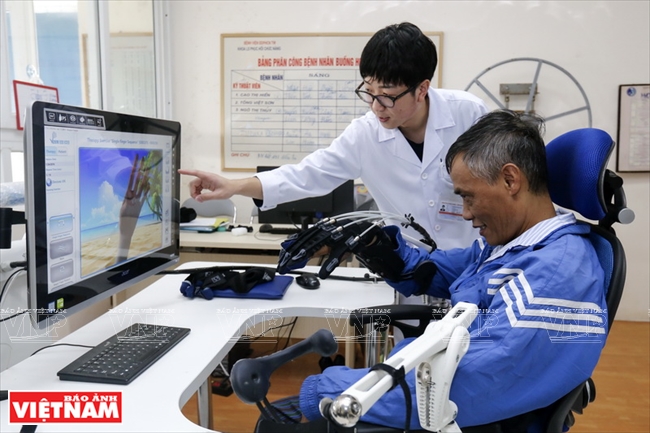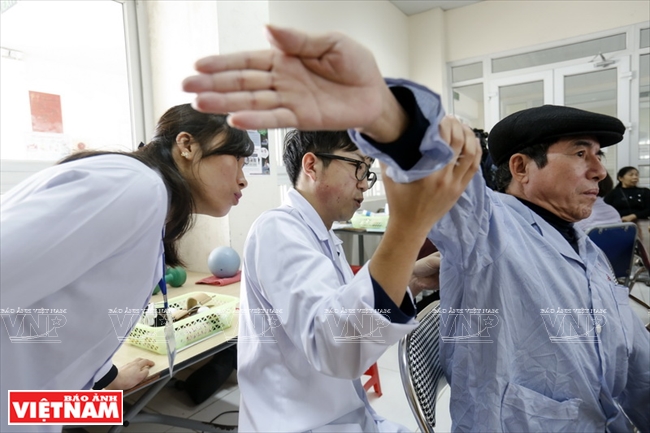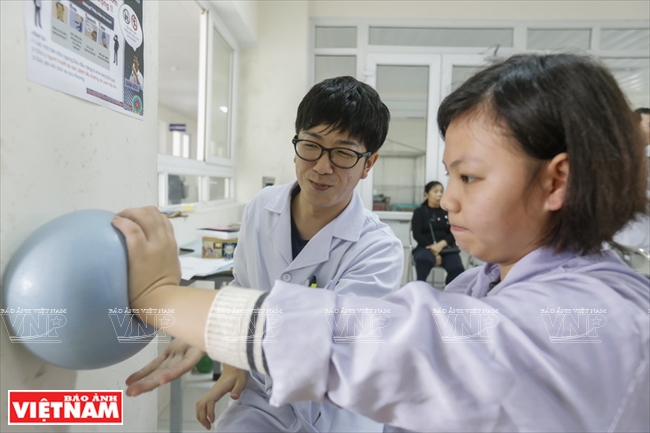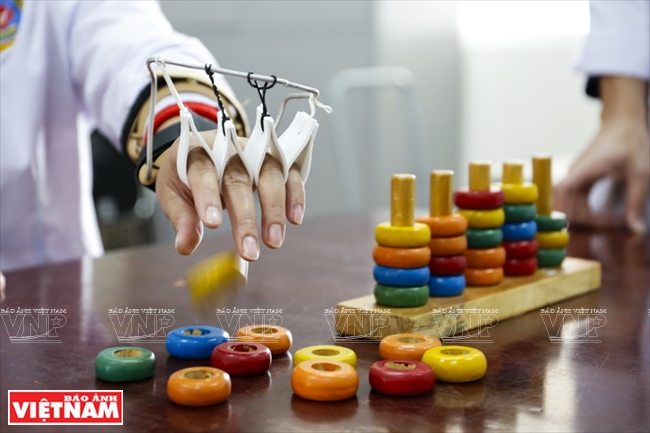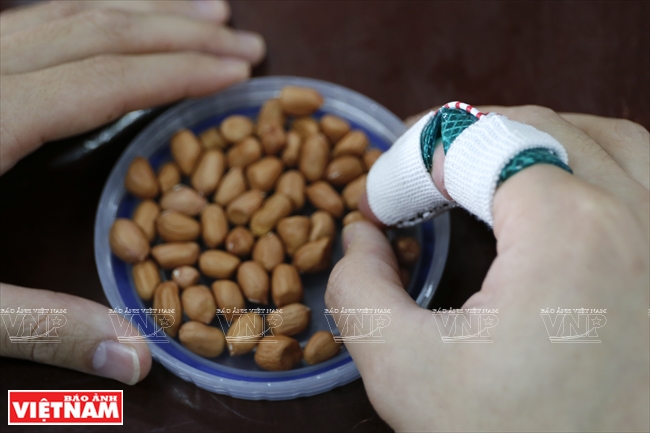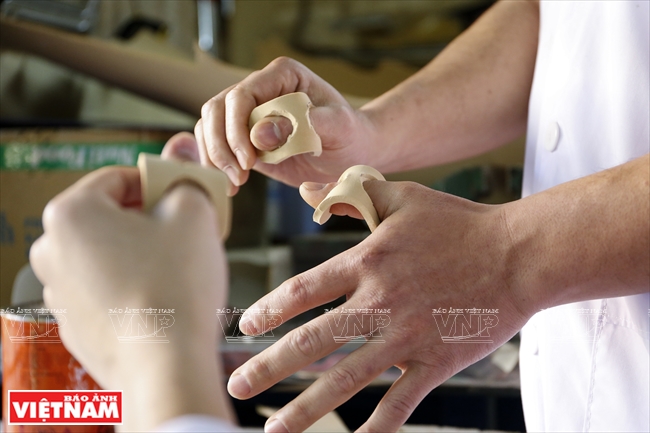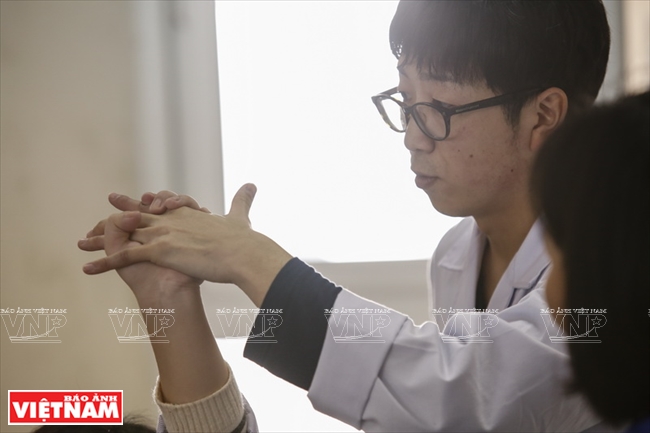Arriving at the hospital during the noon hour, we could not talk with Kazuhiro until afternoon as he was still busy with patients.
The young doctor said he had worked in Vietnam for nearly a year and could speak some Vietnamese. “Speaking Vietnamese helps create an easy and friendly atmosphere when I meet my patients, which positively affects the treatment,” Kazuhiro said.
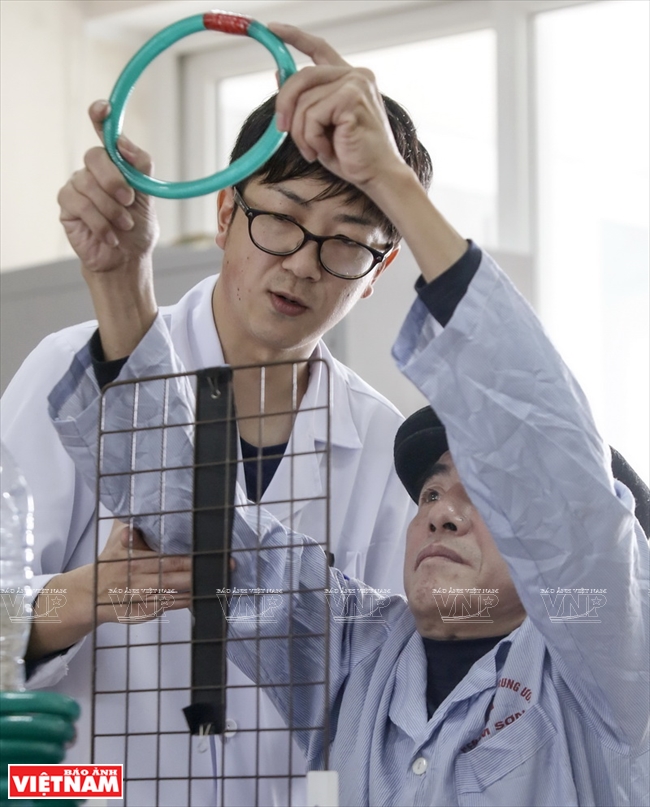 Kazuhiro is a volunteer specialist at the Thanh Hoa Nursing and Rehabilitation Central Hospital. |
After graduating from medical school, Kazuhiro traveled to South East Asia to learn about healthcare systems in developing countries, particularly their rehabilitation methods.
When JICA recruited volunteers to go to Vietnam, Kazuhiro found it a good opportunity for him to share knowledge and learn from Vietnamese colleagues.
“I was lucky to be recruited for this programme. I love my work here and am glad to see the fast rehabilitation of my patients,” the 29-year-old doctor said.
Doctor Le Duy Cuong, head of the Clinical and Functional Rehabilitation Ward, said the Japanese specialist helped improve the hospital’s treatment capacity as well as the effectiveness of interventions in functional rehabilitation.
Patients directly treated by Kazuhiro have made steady progress, incrementally having flexible movements in their daily life activities.
A typical patient of Kazuhiro was 13-year-old Trinh Thu Hang who suffered brain injuries and could not move her hands. After three weeks receiving the Japanese doctor’s treatment, Hang could perform all activities of daily living such as eating, drinking and getting dressed.
Kazuhiro is also an inventor of tools to aid the rehabilitation process, which he calls “made by K/IIZUKA”. From plastic, sponges, or wood bars, Kazuhiro makes tools for his patients to do hand exercises such as holding a spoon or cutting their nails. These simple but effective devices are useful in treatment and more importantly save money for patients.
Kazuhiro still has plans before he leaves Vietnam in March 2019. “I want to visit other hospitals in central and southern Vietnam and have more friends and colleagues in this country. I also wish to introduce “made by K/IIZUKA” functional rehabilitation aids on social networks so more people can learn about them,” Kazuhiro said. We, too, hope his plans will be realised.

